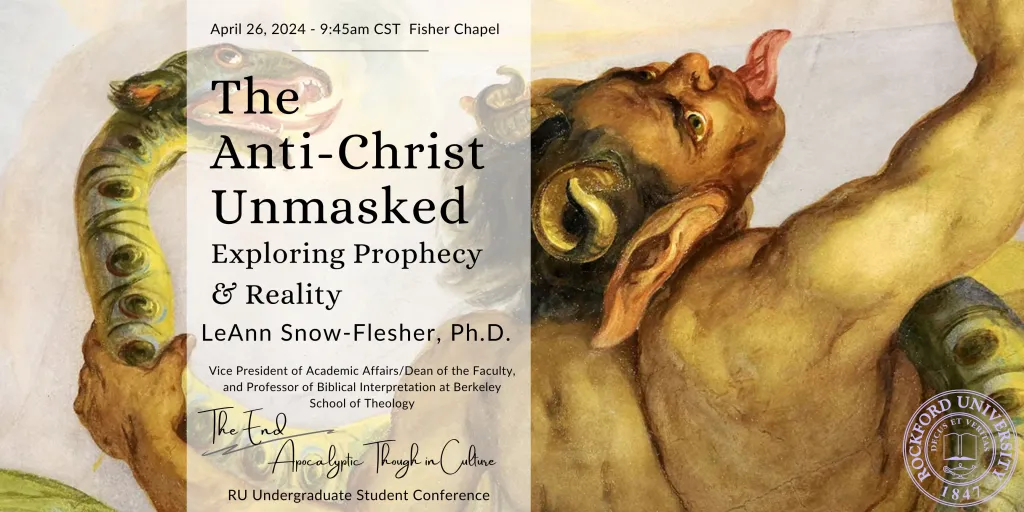Emilio Sauri
Toward the conclusion of his Thresholds of Illiteracy, Abraham Acosta notes that “Like Marx’s notion of class, community is equally heterogeneous and contingent” (Acosta 237). The analogy is drawn in reference to the U.S.-Mexico border studies and its broad “identity-based affirmation of border culture,” which, he argues, not only fails to recognize the “sheer heterogeneity” (Acosta 237) of the border crosser, but in so doing, reproduces the very forms of exclusion and exception its discourses aim to overcome. From this perspective, border studies becomes another instance of what Thresholds describes as the crisis or “deadlock of resistance,” a “methodological impasse” (2) Acosta sees in prevailing theories of Latin American culture, and particularly the Latin Americanist discourses of indigenismo, testimonio, and Zapatismo. Like border studies, these discourses have continuously sought to revitalize its political aims by locating new, untapped forms of resistance to various kinds of domination (the West, colonialism, imperialism) in cultures and practices, which, in Acosta’s view, are thought “to be exhibiting—performing/signifying—opposition or subversion to the regional, national, and global fields of social ordering in which they are inscribed” (4). All of this amounts to a hunting-in-the-margins for a type of cultural difference conceived as exterior to, and in this sense, not yet fully incorporated into, the logic of such fields of social ordering. In Thresholds, however, the conception of a position “outside” is itself illusory, insofar as this commitment to cultural resistance rests on an appropriation and homogenization of difference, now revealed to be a product of the same discourses Latin Americanism claims to resist. Yet, if Thresholds begins, for this reason, with the question, “What if the affirmation of difference ultimately fulfills an integral aspect of capitalist reproduction?” (5), we might say it ends by raising another: in what sense is class like a community?
But first, what Thresholds makes clear is that Latin Americanism has long defined resistance as an investment in the subject’s position; and indeed, Acosta notes that the prominence given to popular practices in cultural studies has its origins in the assumption that, “emerging from the people, they are objects of analysis more in touch with the actual life of the community” (4). The concept of illiteracy, and its destabilization of the binary literacy/orality, might be understood best, then, as the effort to undermine this investment by revealing an unassimilable “excess” and “ungovernability” that “cannot be subsumed within this cultural economy” (10), and in so doing, points to the very forms of exclusion that makes the thought of such positions possible in the first place. Hence, Acosta’s claim that illiteracy itself is “not a positive property but merely a lack of position and indifferentiation” (12). This is ultimately a problem of mediation, or more precisely, a problem resulting from a mistaken belief in a position that holds out the “possibility of an unmediated (non-ideological) relation” (8) to Latin America and history more generally; that is, a kind of immediacy that would make any claim articulated from that position “outside” true or right in a way that claims made from any another position could not be. Meanwhile, this divide between literacy and orality knows many displacements, including the binaries speech / silence and metaphoricity / materialism, and its implications emerge most powerfully in the book’s discussion of U.S.-Mexico border studies, where what Chicano studies conceives as the “material, geographical, and flesh-and-blood side of the U.S.-Mexico border” is revealed to be “no less metaphorical and textual than the ‘theoretical’ border work it opposes itself to” (212). At the same time, Thresholds also suggests the more fundamental binary is inclusion/exclusion, and while it’s easy enough to see why this is no less foundational to a concept like community, its emphasis on exclusion also begs the question of whether the same can be said of class. Or to put it another way, what is capital’s illiteracy?
In the third volume of Capital, Marx asks, “What makes a class?,” but while he links this to another question – “What makes wage-labourers, capitalists and landowners the formative elements of the three great social classes?” – answers aren’t particularly forthcoming in what is essentially a brief fragment taken from an unfinished manuscript.(Marx, Capital 1025-26) Even here, however, the economic dimension of class is more or less apparent, and this becomes all the clearer in the preface to the first edition of Capital, volume 1, where Marx explains that “individuals are dealt with here only in so far as they are the personifications of economic categories, the bearers [Träger] of particular class-relations and interests”(Marx, “Preface” 92). But the emphasis on “categories” further suggests not only that class should be understood as a relation rather than a thing, but also that the question of who the wage-laborer, the landowner, and the capitalist are is more or less a matter of indifference. Which is to say that, unlike community, class in Capital is not an identity or subject position, and while Thresholds similarly treats a concept like community as a relation, it also suggests the analogy between these in its closing chapter ultimately moves in one direction: class is “heterogeneous and contingent” like community, but community is not an “economic category” like class. Acosta’s powerful critique of “identity-based affirmations” of cultural resistance offers a welcome contribution to Latin American studies, but one that raises questions about the field’s relationship to social processes of another, related order.
Indeed, the problem of materialism, I think, must eventually reemerge with a vengeance, to the extent that what is at stake isn’t simply a discursive formation or disciplinary field, but “capitalist reproduction,” which is to say capitalism itself. We might say, no doubt too quickly, that this is ultimately a question about the political horizon of illiteracy’s threshold itself, though I think there are two possible answers to this. The first has to do with the book’s emphasis on exclusion, which, as Eugenio Di Stefano and I have recently tried to show, has come to define a tendency within Latin Americanist criticism and theory since at least the 1980s (Stefano and Sauri). We can see something of this already in Threshold’s interest in determining how “the affirmation of difference ultimately fulfills an integral aspect of capitalist reproduction,” which has everything to do with various forms of domination that this affirmation ultimately fails to resist, as Thresholds shows. But the problem with this emphasis on domination, as Di Stefano and I argue, is that, in leaving questions about the same system’s mode of production aside, it has tended to render the structure of capitalist economic relations like class barely visible. And while attending to illiteracy’s threshold highlights a failure of resistance that now plays a significant role in capitalist reproduction, the question remains: how might it render visible the structure of exploitation that animates capital’s logic of exclusion, which today takes on an unprecedented and global scale in the form of surplus populations.
Meanwhile, a second possibility emerges in Threshold’s evocation of what Slavoj Žižek calls a “minimal difference” or “parallax” that suggests the “source of resistance one encounters in the cultural field (…) is the (…) effect of the Self’s ultimately vacuous core” (14). In this way, however, Acosta also returns us to what Žižek identifies as the “ultimate Marxian parallax” between the critique of political economy and the political struggle (Žižek). For Žižek, “The relationship between economy and politics is ultimately that of the well-known visual paradox of the ‘two faces or a vase’: one either sees the two faces or a vase, never both of them—one has to make a choice,” and so “the basic idea of the parallax view is thus that bracketing itself produces its object” (128): you don’t get democratic form without bracketing economic relations and the political state apparatus, while economic relations emerge only if you bracket the state and political ideology. But, as Žižek makes clear, the difference between these is not simply a question of how or from where we look at something—that is, it is not simply a question of the limitations built into our position as particular kinds of subjects—and instead inheres in the object itself. For this reason, “If one tries to keep all these in view simultaneously, one ends up seeing nothing” (129).
From this perspective, the choice between the critique of exploitation and the critique of exclusion is itself a political decision, but one which I now want to suggest Acosta complicates in an entirely original way. We can begin to see this in his treatment of the orality/literacy relation as “a biopolitical formalization of exception in Latin America” (68). Following Agamben’s account of the state of exception, he notes that, “sovereignty is founded both on the ground of conditional temporalities (as if there was a before) and conditional spatialities (as if there were an outside)” (69). Even as it presents itself as the installation of a political order within a pre-existing state of affairs, sovereignty constitutes both the state of exception and the state of nature at the same time. Furthermore, if sovereignty must do so continuously, that is, insofar as there is no before or after, then attending to this “form of relation by which something is included solely through its exclusion” might reveal that the temporality of sovereignty is and has always been the present. But if in this sense, sovereignty is history at a standstill, then perhaps accounting for the threshold of illiteracy and the “principle of exclusion that governs the formal, empty nature” of political life and bare life, as well as of orality and literacy, may yet turn out to be a way of making history appear.
Indeed, following Rancière, Thresholds locates its future “beyond the field of competing interpretations that constitute the present” in the possibility of “a radically democratic, life-affirming determination of resistance within which any one can form a part” (13). This is a possibility that figures like el hombre natural, aclimatados, monoligües, and los que nunca llegarán gesture toward but can never embody, precisely because their transformation into a political subject would generate its own exclusions, thereby undermining the very notion of resistance advanced here. Importantly, Acosta’s concern is not so much with the invisibility of certain forms of identity and difference—a concern that defines the very horizon of liberalism and identity politics—but rather with the politics that emerge when the unexpected appearance of these figures opens up a “zone of indistinction” (10) that requires us to grasp identity and difference as mutually constitutive poles of an aporia,
No less important, however, is the fact that this opening is made possible by the process of figuration, a process which can be said to approximate something like the narratological category of anagnorisis or recognition. No doubt recognition is just as central to liberal political thought and its empty celebrations of diversity; and one need only think here of the various television melodramas that unwittingly demonstrate the political dead end to which such thought leads. (One might think here of season one of the American version of The Bridge, though other examples come readily to mind.) But, as Fredric Jameson reminds us in Valences of the Dialectic, anagnorisis can also be translated into English as “discovery,” and it is in this sense that the moment of recognition transforms not simply the relationship between collective characters or actants, but the very field of social ordering in which such relationships are grounded. From a certain perspective, then, the distance between anagnorisis and the form of politics central to Thresholds is minimal, for as Acosta, following Rancière, notes, politics “exists when the natural order of domination is interrupted by the institution of a part of those who have no part” (12), making “visible what had no business being seen, and mak[ing] heard a discourse where once there was only place for noise” (74). How, then, might this interruption lead us from the question of the visible, the audible, and the sayable to the structure of the social whole?
For now, we might say that if illiteracy is the “specific textual modality through which this interruption takes place” (12), then it is one that not only recalls Rancière’s definition of politics, but also prefigures the operation of anagnorisis Jameson describes as the “identification of agents not yet fully visible, the reorganization and redistribution of the actantial field,” and ultimately an “indispensible preliminary moment” in our analysis of the relationship between system and agents, or science and ideology, and for making history appear (Jameson, Valences 578) [1]. This discovery, nonetheless, is not carried out by replacing ideology with science, and to think otherwise is to assume the kind of immediacy to which Acosta’s illiteracy gives the lie. Similarly, Jameson insists ideology is “always with us in the realm of historical analysis … and our analyses of objective conditions and their possibilities are always organized by a certain social Imaginary” – an Imaginary he has elsewhere identified with “cognitive mapping” (578), itself a reactivation of history achieved by a translation of time into space. To the extend we can see a similar operation at work in Acosta’s threshold of illiteracy, I’d like to conclude by hazarding the somewhat scandalous suggestion that illiteracy itself approximates something like cognitive mapping. And while the threshold doesn’t propose to bridge the gap constitutive of “Marxism’s ultimate parallax,” its emphasis on the process of figuration or anagnorisis holds out the possibility of a future “beyond … the present.” Utopias, Jameson has written, “do not embody the future but rather help us grasp the limits of our images of the future, and indeed our impossibility of imagining a radically different future,” and it is in staging the limits that inhere within Latin Americanism’s crisis of resistance today that Acosta points us to something like the utopian function of illiteracy’s threshold itself (Jameson, “A New Reading”).
Notes:
[1] For a demonstration of what this operation looks like, one could do no better than Roberto Schwarz’s studies of the great Brazilian writer, Machado de Assis. See, for example, A Master on the Periphery of Capitalism (Duke Univ. Press, 2001) and the more recent Two Girls and Other Essays (Verso, 2012).
Works Cited:
– Acosta, Abraham. Thresholds of Illiteracy: Theory, Latin America, and the Crisis of Resistance. Fordham University Press, 2014.
– Di Stefano, Eugenio and Emilio Sauri. “Making it Visible: Latin Americanist Criticism, Literature, and the Question of Exploitation Today,” nonsite.org #13, Fall 2014), http://nonsite.org/article/making-it-visible.
– Jameson, Fredric. “A New Reading of Capital,” Mediations 25.1 (Fall 2010): http://www.mediationsjournal.org/articles/a-new-reading-of-capital.
—. Valences of the Dialectic. Verso, 2010.
– Marx, Karl. Capital: A Critique of Political Economy, Vol. Three. Penguin Books, 1993.
—. “Preface to the First Edition”. Capital: A Critique of Political Economy, Vol. Three. Vintage Books, 1997.
– Žižek, Slavoj. “The Parallax View,” New Left Review 25 (Jan.-Feb. 2004), 127.






Leave a comment